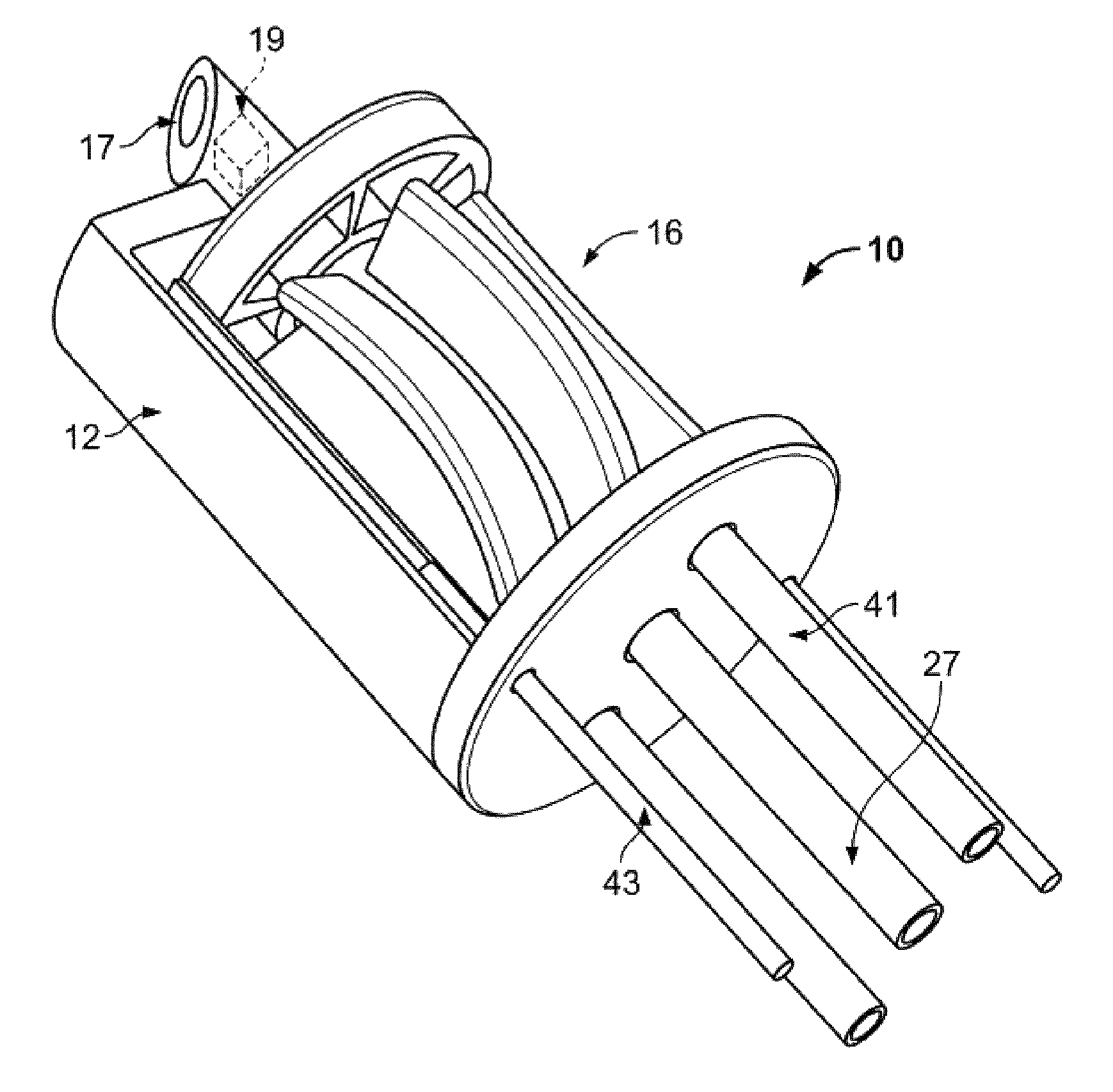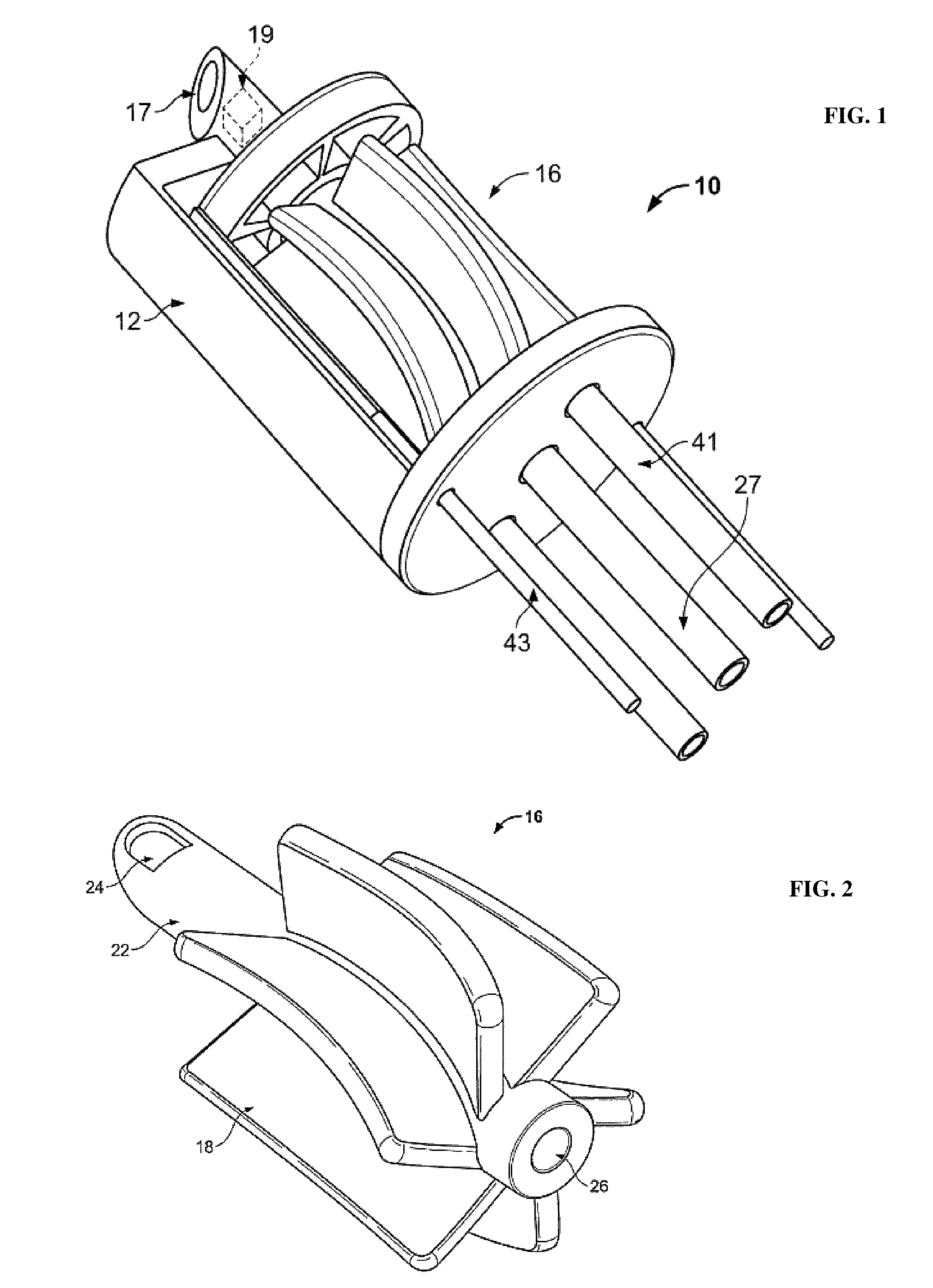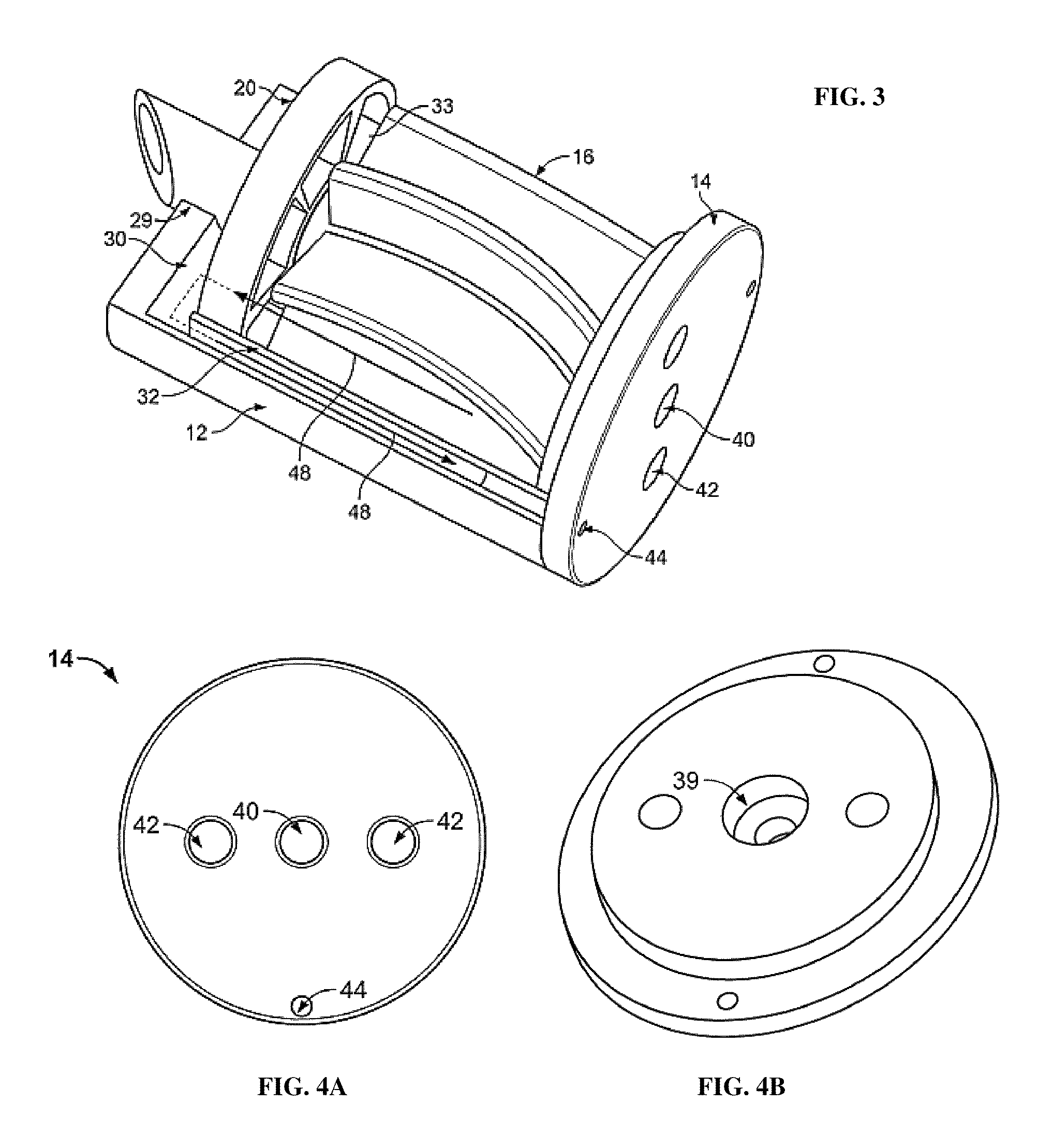Rotating optical catheter tip for optical coherence tomography
a technology of optical coherence tomography and rotating shaft, which is applied in the field of catheters, can solve the problems of non-uniform rotation of single fiber oct prototypes, limited duration of saline use, and mechanical drag in the rotating shaft can produce significant distortion and artifacts, and achieve precise depth-resolved imaging of plaques
- Summary
- Abstract
- Description
- Claims
- Application Information
AI Technical Summary
Benefits of technology
Problems solved by technology
Method used
Image
Examples
first embodiment
[0036]An alternative embodiment of the turbine member 16 is illustrated in FIG. 7. The principal difference between the turbine member illustrated in FIGS. 1-5 is that there is a space in between the focusing element 19 and the conduit 27. The space may be an air space or an optical gap providing for the optical energy permission to expand before being focused by the focusing element. In this embodiment, the focusing element 19 and the reflecting material 17 both rotate about the axis by the axle 22, by being substantially connected to the axle by optical glue, or the like. Also, the curved or helical pitch of the turbine vanes 18 is greater than that depicted in FIGS. 1-5, such that they subtend approximately a 90 degree arc about the circumference of the axle 22.
second embodiment
[0037]a cap member 20 is depicted in FIG. 8, and is synonymously termed second cap member 60. The second cap member 60 includes a central opening 64, a collection channel 65 and a plurality of outflow ports 66. The central opening 64 is concentrically mounted onto the distal end of the axle 22 to permit axle 22 to rotate freely thereabout. The collection channel 65 is connected to the outflow ports 66, to permit the outflow of fluid. The outflow ports are substantially aligned with the outflow ports 66 of the catheter cap 14, to allow the outflow to return to the fluid source (not shown). Second cap member 60 is similar to second cap member 60, in that it has an inner annular member 64 through which the axle 22 of turbine member, and an outer annular member 62 which is in concentrically spaced apart relationship therewith 16 passes except that after fluid flows through the spaces 35 it enters a return path by passing through outlet flow ports 66 which are provided about a peripheral...
PUM
 Login to View More
Login to View More Abstract
Description
Claims
Application Information
 Login to View More
Login to View More - R&D
- Intellectual Property
- Life Sciences
- Materials
- Tech Scout
- Unparalleled Data Quality
- Higher Quality Content
- 60% Fewer Hallucinations
Browse by: Latest US Patents, China's latest patents, Technical Efficacy Thesaurus, Application Domain, Technology Topic, Popular Technical Reports.
© 2025 PatSnap. All rights reserved.Legal|Privacy policy|Modern Slavery Act Transparency Statement|Sitemap|About US| Contact US: help@patsnap.com



